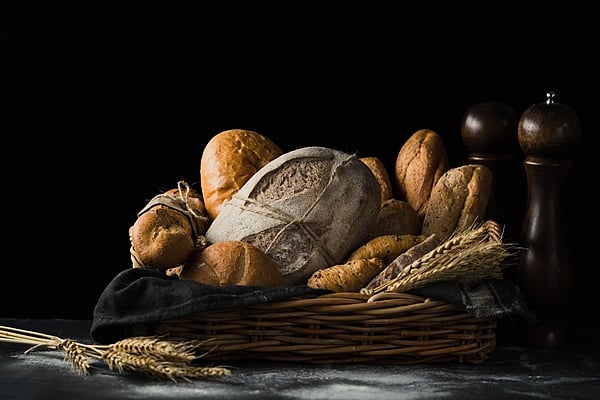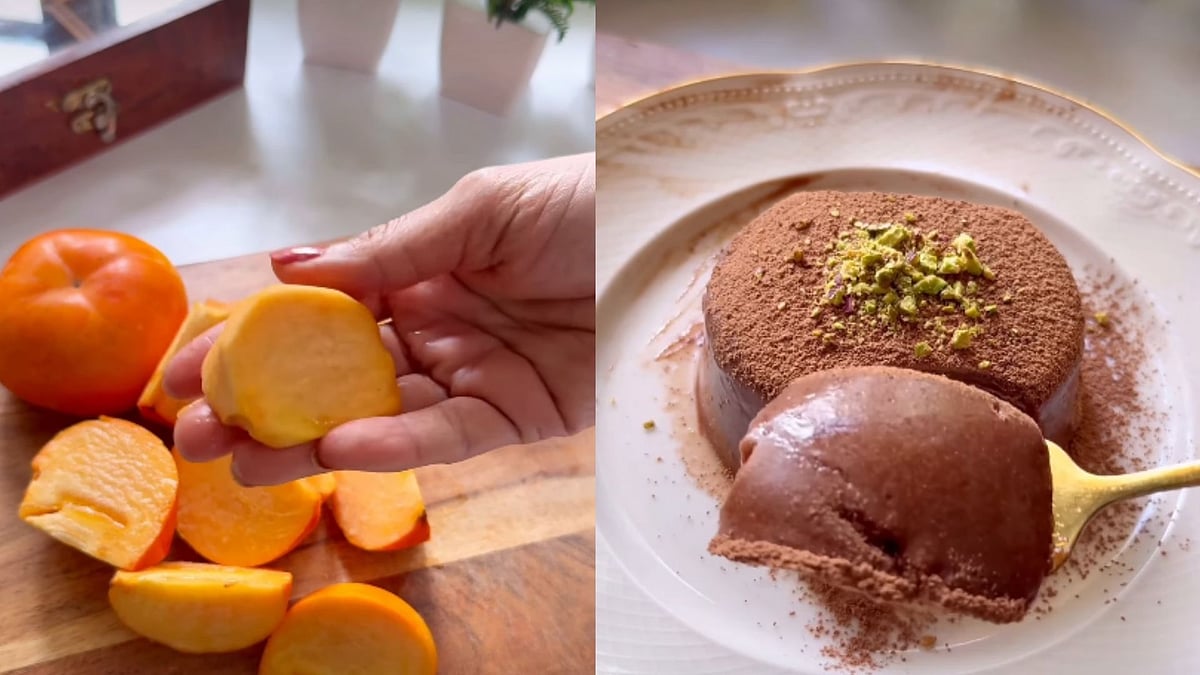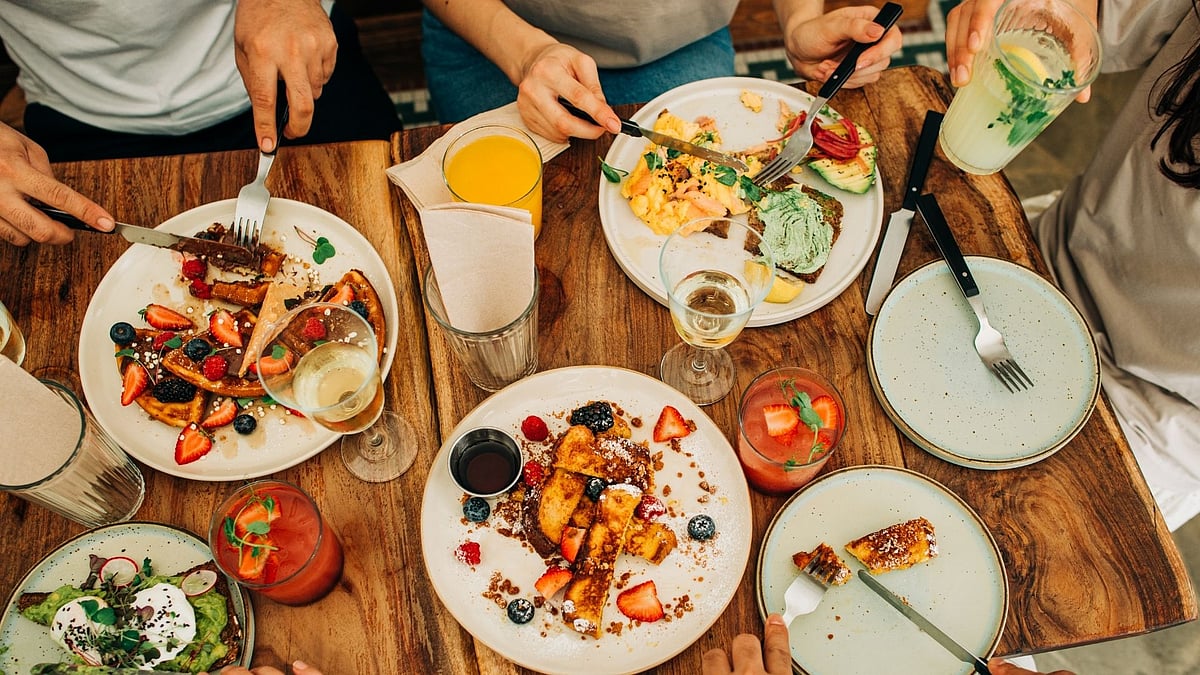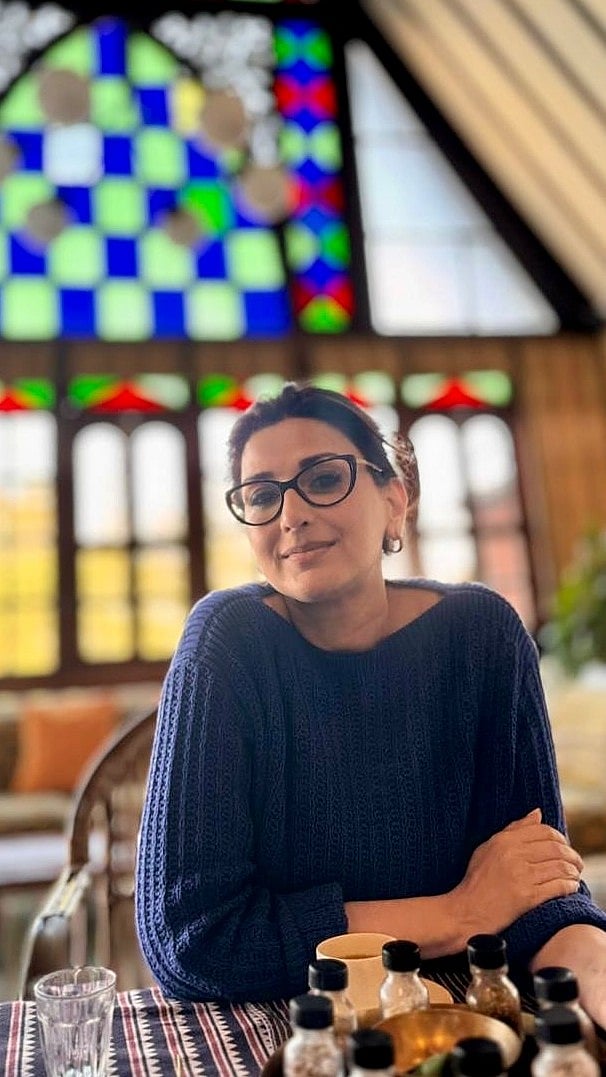There’s something fascinating about entering a house which smells of just-out-of-the-oven bread. And then pulling apart a warm, freshly baked loaf is another gastronomic high. On a lighter note, it also provides workout to build muscle power by way of kneading the dough.
In today’s times, with a fast and hectic pace, most of us opt for an easy and quick breakfast. And bread is what comes to mind. Therefore it is essential to ensure bread with nutrients and better health benefits.
“Dump refined flour or maida for whole wheat or multigrain flour. Add oats, flax or sesame seeds; fresh fruits, herbs and organic condiments for taste and flavour,” says Shibendu Ray Chaudhury – Executive Sous Chef, Renaissance Mumbai.
Baking your own bread confers upon you a sense of command. For, you decide the nutritious ingredients that go into it, control the amount of salt, and avoid artificial flavourings and preservatives. Besides, it is so exciting to create new variants every time you get into the mood.





Humayunn Peerzaada
For instance, multigrain, stuffed breads, knotted ones, Danish pastry, focaccia with herbs and garlic, sourdough, pita, pizza base or ladi pav, gutli or kadak pav – the list is unrelenting. You can do so much by learning to bake and get more innovative.
Goodness comes with certain limitations – home-baked breads have a short shelf life unlike manufactured ones that contain preservatives.
According to Samira Mistry, Chef at VP Projects, “To keep them soft, these are best stored away from humidity and heat, in airtight plastic bags. If you like it crusty, refrigerate it.”
Travelling from Goa to Mumbai, the humble pav has come a long way. After the Goan bakers, the Iranis stepped into the bread zone and made pav a budget staple of the common man.
And the food combinations with pav are overwhelming – vada pav, pav bhaji, kheema pav, usal/misal pav, Gujarati dabeli; omelette pav, bhurji or anda pav of the Parsis. Simply bake ladi pav at home to enjoy your favourite pairings. Bun is soft while brun is hard and crusty.
Best bread places in Mumbai:
The unassuming Vada pav stall outside Kirti College with vada cloaked in garlic chutney; the no-frills Aaswad in Dadar for dabeli, unison of pav with misal/usal siblings; the old world charm of Kayani Bakery in Dhobi Talao for bun maska, cheese burji pav and Irani chai.
Try the kheema ghotala pav of mutton scrambled with egg at Café Military in Fort. Another place famous for kheema pav is Olympia in Colaba.
The legendary City Bakery in Worli, has croissants, Danish pastry, methi naan, dinner rolls, brown and multi-grain breads. They are fresh, cheap and a go-to place for bread lovers.
Breadily Baked in Chembur: For a quick bite on a budget, with an alfresco seating, pita breads, puff pastries, oats and walnuts, sourdough, multigrain, focaccia, baguette, garlic, croissants, puffed chicken bun – you name it and they have it!
Hearsch Bakery Hill Road, Bandra: If freshly baked puffs, rolls, hot dogs, burgers and croissants are your hankerings, look no further than this bakery. Reasonably priced, it is almost always packed with Bandraiites.
Get an authentic feel of the Irani restaurant as you dig into brun-muska-chai or ghotala pav with raspberry soda and SodaBottleOpenerWala at BKC, Lower Parel or Thane.
(Real Bread Week is ongoing from February 22 to March 1, 2020)
Just bake it!

JOHN SHERMAN
Here’s an easy-to-make basic bread recipe by Shibendu Ray Chaudhury – Executive Sous Chef, Renaissance Mumbai.
Ingredients:
Flour (9 cups)
Water (1 ½ to 2 ½ Cups – Divided)
Salt (¾ tablespoon)
Butter (3 ½ Tablespoon)
Honey (½ tablespoon honey)
Yeast (4 tablespoon)
Citric Acid/ Vinegar (Optional)
Method:
In the bowl, stir to dissolve the yeast in ¾ cups of warm water and keep aside for 10 minutes.
Add all the above ingredients, using a spatula, mix it all to form a rough dough.
Once the rough dough is ready, knead it until you feel the texture of the dough.
If the dough is too wet, you can add a little flour for it to mix well
Once the dough is kneaded, fold the dough over a few times by hand. Then place it in a lightly oiled bowl, and cover with plastic wrap. Let the dough rest for about 45 minutes – 1 hour until it has doubled in size.
Sprinkle some flour in the pan and press the dough when its ready
Preheat the oven to 350 – 375 degree for 20 min before baking the bread and then bake the dough for 45 minutes.
Once it’s ready, allow it to cool for 15 to 20 minutes.
And you have fresh home-baked loaf!









